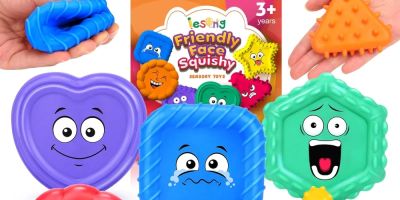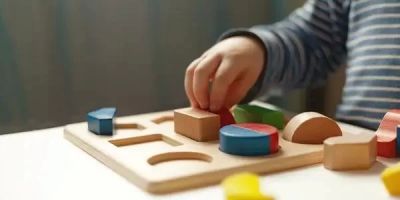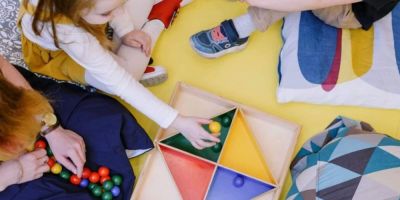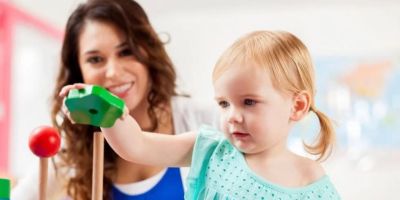- 1-importance-of-quiet-play
- 2-criteria-for-selecting-quiet-play-toys
- 3-top-quiet-play-toy-categories
- 4-real-life-examples-and-benefits
- 5-where-to-find-quality-quiet-play-toys
1. Why Quiet Play Matters for Children’s Development
Quiet play is often overlooked in today’s fast-paced, technology-driven world, yet it holds a critical role in a child’s growth. Activities that encourage calm and focused engagement help develop essential skills such as concentration, problem-solving, and emotional regulation. When children engage in quiet play, they learn to explore their creativity internally and build independence.
Experts highlight that quiet play also supports mental health by reducing overstimulation, which can be especially beneficial for children who are easily overwhelmed. For example, a child who spends time assembling puzzles or building models learns patience and persistence in a peaceful environment. These moments lay the foundation for lifelong learning habits.
1.1 The Emotional and Cognitive Impact
Children exposed regularly to quiet play toys tend to have improved attention spans and better self-soothing techniques. Unlike noisy or screen-based activities, quiet play allows kids to connect deeply with the task, fostering mindfulness and reducing anxiety. These outcomes have been supported by numerous developmental studies focusing on play-based learning.
2. What to Look for When Choosing Toys for Quiet Play
Selecting the best toys for quiet play involves more than just picking items that don’t make noise. To truly benefit a child’s development, toys should be thoughtfully designed to engage their minds while encouraging calmness. Here are critical criteria to consider:
2.1 Safety and Durability
Quiet play toys should be safe for children of all ages, free from harmful chemicals and choking hazards. Durability is also important since toys intended for independent play often face repeated use. Parents should look for well-crafted products made from non-toxic materials.
2.2 Educational Value
The best quiet toys inspire learning, whether through puzzles, building blocks, or creative arts and crafts. Toys that subtly teach numbers, colors, shapes, or spatial awareness can turn quiet moments into productive developmental experiences.
2.3 Age Appropriateness and Engagement
A toy too advanced or too simple can quickly lose a child's interest. It’s essential to choose items matching the child’s developmental stage, with enough challenge to stimulate curiosity without causing frustration.
3. Top Categories of Quiet Play Toys and How They Help
Exploring various categories of quiet play toys reveals a rich selection designed to meet diverse interests and developmental needs. Below is a deep dive into some of the most effective types:
3.1 Building and Construction Sets
Building toys like wooden blocks or magnetic tiles encourage creativity and fine motor skills. For instance, a child creating intricate designs with blocks experiences a sense of accomplishment while quietly concentrating. These toys also teach spatial reasoning and planning.
3.2 Puzzles and Brain Teasers
Puzzles are a timeless quiet play choice, ideal for fostering problem-solving skills and patience. They can range from simple shapes for toddlers to complex jigsaws for older kids. The quiet focus needed to complete puzzles promotes mindfulness and persistence.
3.3 Arts and Crafts Kits
Art supplies such as coloring books, modeling clay, or bead sets provide children a calming outlet for self-expression. Crafting not only quiets the mind but also enhances creativity and hand-eye coordination.
3.4 Sensory and Fidget Toys
For kids who need gentle stimulation without noise, sensory toys like stress balls, textured fabrics, or kinetic sand offer a tactile experience that supports focus and relaxation. These toys are especially useful for children with sensory processing needs.
4. Real-Life Stories Demonstrating the Power of Quiet Play
Consider the story of Emily, a 6-year-old who struggled with hyperactivity. Her parents introduced quiet play toys, including magnetic building tiles and puzzle sets, into her daily routine. Over several months, Emily’s ability to concentrate improved noticeably, and she developed a new passion for building complex structures, which positively influenced her confidence and patience.
Another example comes from a classroom setting where teachers incorporated quiet play kits during downtime. Children who engaged with the calm toys demonstrated fewer behavioral issues and showed enhanced social cooperation during group activities, highlighting the social benefits of quiet play.
4.1 Why Quiet Play Enhances Learning Outcomes
Quiet play encourages children to engage in deep thinking and reflection, crucial for problem-solving and creative development. This intentional engagement often leads to higher academic performance and emotional intelligence, as children learn to manage emotions and focus effectively.
5. Where to Find the Best Quiet Play Toys and Services
Finding quality quiet play toys can be challenging, given the overwhelming market options. To ensure you get toys that truly benefit your child, consider trusted providers that specialize in educational and developmental toys. Knight Toys is a reliable source known for curating a wide range of quiet play items that combine fun with learning.
Knight Toys offers personalized recommendations and detailed product descriptions to help parents and educators select the perfect toys tailored to each child's needs. Their commitment to quality and safety ensures peace of mind, making them a go-to destination for quiet play essentials.





